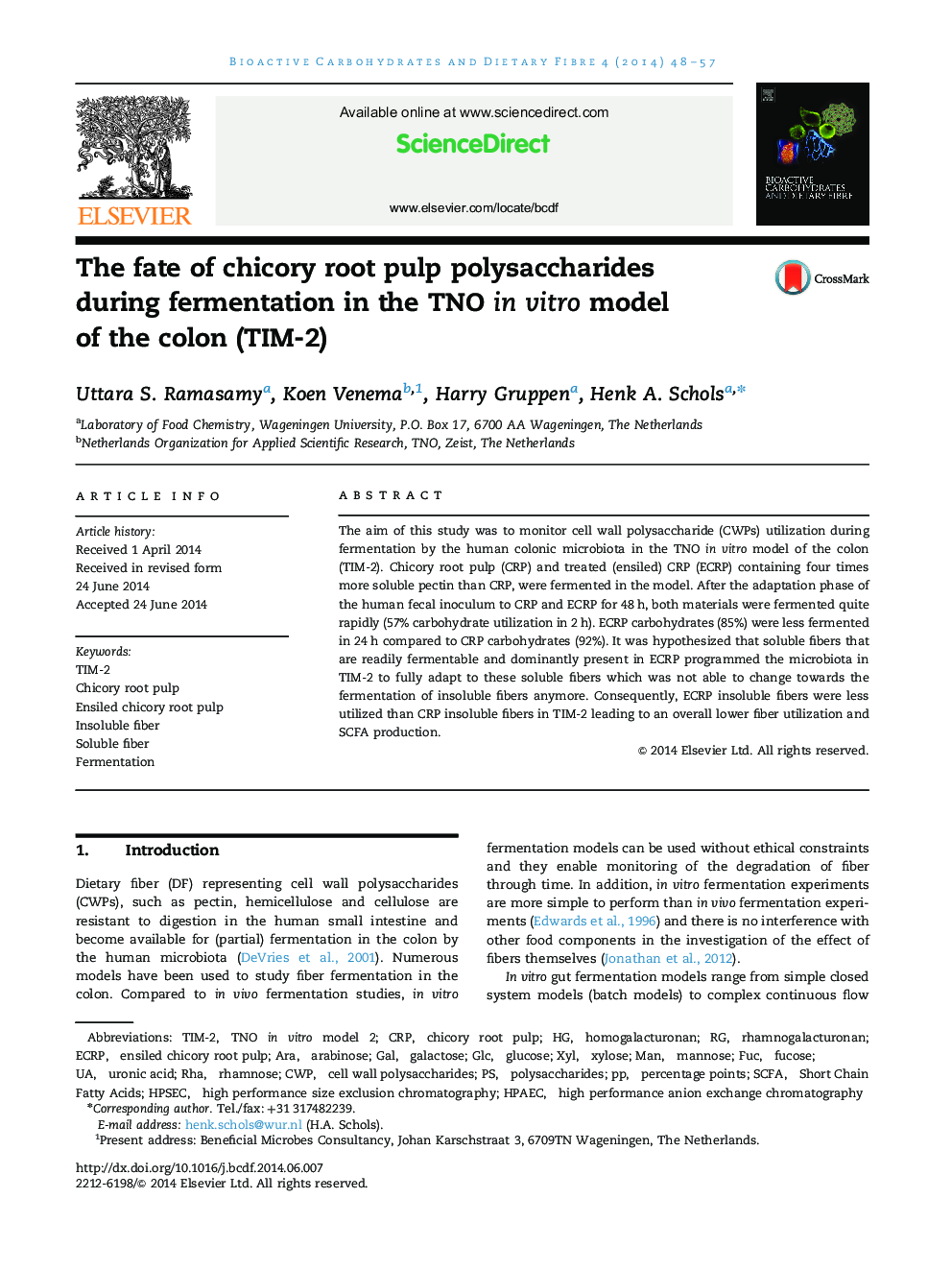| Article ID | Journal | Published Year | Pages | File Type |
|---|---|---|---|---|
| 1413037 | Bioactive Carbohydrates and Dietary Fibre | 2014 | 10 Pages |
•Chicory root pulp (CRP) and ensiled CRP (ECRP) were fermented in the TIM-2 model.•ECRP contains four times more soluble pectin than CRP.•Both CRP and ECRP were fermented quickly in the model.•After 24 h, ECRP carbohydrates were less utilized compared to CRP carbohydrates (85% versus 92%).•This is due to the programming of microbiota to mainly ferment soluble fibers in ECRP.
The aim of this study was to monitor cell wall polysaccharide (CWPs) utilization during fermentation by the human colonic microbiota in the TNO in vitro model of the colon (TIM-2). Chicory root pulp (CRP) and treated (ensiled) CRP (ECRP) containing four times more soluble pectin than CRP, were fermented in the model. After the adaptation phase of the human fecal inoculum to CRP and ECRP for 48 h, both materials were fermented quite rapidly (57% carbohydrate utilization in 2 h). ECRP carbohydrates (85%) were less fermented in 24 h compared to CRP carbohydrates (92%). It was hypothesized that soluble fibers that are readily fermentable and dominantly present in ECRP programmed the microbiota in TIM-2 to fully adapt to these soluble fibers which was not able to change towards the fermentation of insoluble fibers anymore. Consequently, ECRP insoluble fibers were less utilized than CRP insoluble fibers in TIM-2 leading to an overall lower fiber utilization and SCFA production.
Graphical abstractFigure optionsDownload full-size imageDownload as PowerPoint slide
